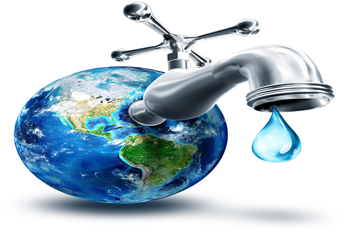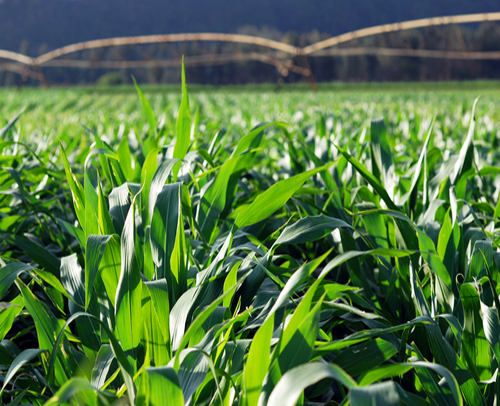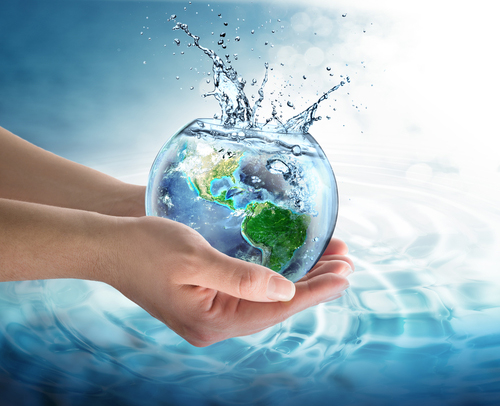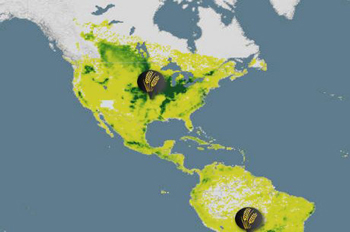Issues Facing US Agriculture- Shortages of Petroleum & Water
AG TRENDS FOCUS PAGE
This page has been created as a resource for Migrant Education Programs interested in in keeping up with current trends affecting US Agriculture. It is a collaborative project between the IRRC Consortium and the GOSOSY Consortium.

Agriculture is a vital part of the United States. It has taken on a multitude of shapes and forms since the inception of America. The bottom line? Agriculture is crucial to our survival. More than likely, most individuals working in agriculture would confess that we ought to understand agriculture better. This might include knowing where your food is coming from, how that process works, the issues the industry are facing, and where its heading in general. Read more...
View an Interactive Map about Global Crop Yields
When world markets are very interconnected it is important to see what specific trends affect production, imports, exports, farmers and workers.
AGRICULTURE'S NEED
FOR CHEAP
PETROLEUM

From mechanized feedlots to automatic irrigation systems to agricultural machinery, North American agriculture has become increasingly industrialized, placing ever-greater demands on fossil fuel, water and topsoil resources. Petroleum not only fuels trucks and mechanized farm equipment, but also serves as a base for synthetic pesticides and fertilizers, tying the cost of growing food increasingly closer to the price of oil.
“We have an industrial agricultural system that’s totally dependent on the assumption that cheap fossil fuels will last forever,” says sustainable food and farming professor, John Gerber of the University of Massachusetts, Amherst. “That’s not a useful assumption anymore.” Many believe that the world has already passed “peak oil”, the point where the volume of oil reserves reaches its highest point and begins to decline. Read More

For example, the enormous harvesters that permit large-scale farming, the irrigation systems that deliver water to otherwise arid land, and the trucks that deliver produce from California to the East Coast, all run on petroleum-based fuel. The two major categories of agrochemicals are pesticides and fertilizers.
Pesticides are widely used to control insects and other pest species; pesticide manufacturing is heavily dependent on petroleum feedstocks. Fertilizers provide fixed nitrogen, an essential component of plant growth, far more efficiently than soil bacteria (often associated with the roots of legumes) can provide it. Fertilizer is manufactured through the energy-intensive Haber-Bosch process, using electricity, and the hydrogen molecules that are fixed to nitrogen come from a fossil fuel—coal, oil, or, more recently, natural gas. Scarcity of petroleum and natural gas will increase the price of both pesticides and fertilizers. The same is true of other nitrogen-based agricultural chemicals, such as the urea used in cattle feed.

Food travels long distances from farm to market. A large share (by volume) of the U.S. diet is imported. The concept of “food miles” captures and quantifies this phenomenon. Various analyses have calculated the “weighted average source distance” produce travels to U.S. consumers' tables as between 1,346 and 1,500 miles. The transport costs associated with this travel are included in food prices.
For these reasons, modern agriculture has been described as “eating fossil fuels.” Food contains large amounts of “embodied energy”—the energy in the fertilizers, pesticides, machinery, and transportation that underlie food production and shipment. One pound of lettuce contains 80 calories of food energy, but to grow, wash, package, and transport it from a California field to an East Coast market requires more than 4,600 calories of fossil fuel energy—or more than 50 calories of fossil fuel energy in for every calorie of food energy out.

The central role of petroleum in agriculture and the central role of adequate food for health suggest that petroleum scarcity may affect health via this pathway. Agricultural impacts will manifest differently in different regions. In wealthy nations such as the U.S., the food supply is generally adequate, but about 11% of households—12.6 million households—are food-insecure, meaning that they have difficulty at some time during the year in providing enough food for all their members due to lack of resources.
Because food production in wealthy countries relies heavily on agrochemicals, mechanization, and long-distance transport, it is keenly sensitive to petroleum cost and availability. As a result, petroleum scarcity could seriously compromise food production. As prices rise, wealthier people are likely to cope, but the level of food insecurity may increase among those with fewer resources. Read More

Many of the agriculture products produced in the US are in areas that are grown on irrigated land. The Ogallala aquifer turned the region into America's breadbasket. Now it, and a way of life, are being drained away.
View the National Geographic Article on the current state of the aquifer.
The following web resources and articles have been gathered to explain how the US Agriculture Market is currently affected by water and possible petroleum shortages.
THE U.S. CORN VALUE CHAIN
Corn is the nation’s biggest crop economically and takes up nearly one-third of U.S. cropland—an area equivalent to two Floridas. In 2013, nearly three-quarters of the corn crop went either to feed animals or to fuel cars – just 10% was used for direct human consumption.

In assessing the U.S. corn value chain, 16 sectors—from fast food companies to fertilizer manufacturers to grocery retailers depend on U.S. corn as a key ingredient of their products or as a market for their inputs and services. In 2013, the top 45 companies in the corn value chain earned $1.7 trillion in revenue, more than the value of Australia’s annual GDP.
Increasingly severe weather events and higher domestic and foreign demand for corn have contributed to a steady uptick and unprecedented volatility in corn prices, which ranged from $2 a bushel 10 years ago to a record $8 a bushel during the devastating 2012 drought. This volatility has vast implications for the many industries that rely on corn. High corn prices in the wake of extreme flooding in spring 2011 and the prolonged drought in 2012 shuttered ethanol plants, contributed to the culling of beef herds, and reduced margins for many processed food and beverage companies.
Key Industries and Companies in the US Corn Value Chain
IRRIGATION DEMAND & GROUNDWATER DEPLETION
Corn is a thirsty plant, and receives the most irrigation water overall of any American crop: 15.4 million acre-feet annually, or the equivalent of more than 7 million Olympic-sized swimming pools. While per bushel water use has improved over time, total irrigated water demand for corn has grown due to geographic expansion of the crop, especially in areas with high water stress and groundwater depletion.
Over half of the country’s irrigated corn production—worth nearly $9 billion annually—depends on groundwater from the over-exploited High Plains aquifer. Ceres finds that $2.5 billion-worth of corn grain is grown in 20 counties over portions of the High Plains aquifer where groundwater levels are rapidly declining. Of these, five counties have over $150 million each in annual corn grain production at risk from groundwater depletion: Yuma County in Colorado and York, Hamilton, Adams and Filmore counties in Nebraska. Read More...

Americans tend to take it for granted that when we open a tap, water will come out. Western states have been dealing with water problems for a while, but they won't be alone for long.
As drought, flooding, and climate change restrict America's water supply, demands from population growth and energy production look set to increase, according to a report from the U.S. Government Accountability Office.
These two changes squeeze our natural water reserves from both directions. The stress is becoming clear and will soon manifest as water scarcity problems all over our country. Read More.
According to Tim Davis, the Montana Water Resources Division administrator, a water shortage could strike any part of the state in any given year, Elaine S. Povich reports for the Pew Charitable Trusts.
Water demand in Montana just keeps increasing, the state's 2015 State Water Plan says, while the amount of water available changes from year to year, and even within a year, depending on precipitation. The discrepancy between demand and availability means the state is likely going to encounter a water crisis in the next few years. The state is already making contingency plans for potential drought conditions in the future, Davis told Povich.
In coastal areas of the US, rising sea levels taint fresh water coastal aquifers with salt water, which means that water can't be consumed anymore without expensive desalination treatment. This is a looming threat for eastern and southern Maryland, according to the Government Accountability Office report.
In Colorado, officials told the Government Accountability Office they're keeping an eye on the effects of fracking on the state's water supply. Using water for fracking could contribute to local shortages in the drought-prone state, which only gets 12-16 inches of precipitation every year. Plus, a previous GAO report highlighted the risk that fracking can contaminate the water supply so people can't use even the water they normally could.
Also out West, the U.S. Census Bureau projects the populations of Nevada and Arizona will more than double between 2000 and 2030. But those two states get some of the nation's lowest amounts of precipitation, so more people will be vying to use water resources that already aren't plentiful.
While any given person may not be directly causing these water issues, everyone plays a role in how much drinkable water there is in the US. The U.S. Geological Survey estimated that the average American used 88 gallons of water per day in 2010, the latest year it surveyed water use.
The entirety of humanity in America uses 27,400 million gallons per day around the house, for stuff like preparing food, washing clothes, flushing toilets, and watering lawns.
View an interactive map of areas where food is grown in water stressed areas.

"If we could ever competitively, at a cheap rate, get fresh water from saltwater, ..(this) would be in the long-range interests of humanity which could really dwarf any other scientific accomplishments." - John F. Kennedy
